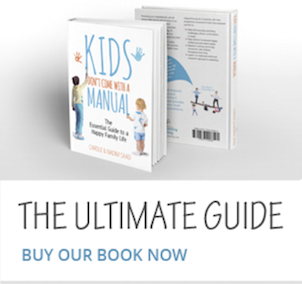Children can feel anxious for all sorts of reasons. Sometimes there’s a source for their worries, and sometimes there seems to be no reason at all. Although it can be upsetting for us parents as we watch our children struggling to deal with strong or difficult emotions, it’s important to remember that such feelings are totally normal and that every parent will experience this with their children at some point.
So if your child is going through a phase of feeling anxious and worried, try not to start worrying yourself! It isn’t a sign that you have done anything wrong as a parent – feelings of worry and anxiety are a natural part of our children’s emotional development. The key is in how we talk to children about their emotions as this has a significant influence on their ability to cope with them. So if your child seems to be worried or anxious about something, here are our top tips for how best to approach the situation:
1. Connect with them
To encourage them to open up to us so that we can start to help them work through their feelings of worry and anxiety, we first need to connect with them. To do this, use a soft tone of voice, get down to their level and if the circumstances allow, give them a hug. A hug is one of the most effective ways of redirecting a child’s emotions because studies show that when we hug someone, this stimulates the brain’s production of dopamine and oxytocin, which help to reduce stress and promote a feeling of happiness and relaxation.
2. Active Listening
We often underestimate how many problems can be resolved by just allowing our children to be ‘heard’, rather than rushing to fix it ourselves by offering them solutions and advice. Therefore, instead of jumping into providing solutions or ‘taking the problem away’ with reassurances, we should first take the time to simply listen to what our children have to say. It is sometimes quite hard to suppress our ‘I will sort this out for you’ reflex, but it is a tool well worth practicing because of the short-term and long-term benefits it brings.
To do this, try sitting at your child’s side, shoulder-to-shoulder as eye-to-eye contact can make it more difficult for children to feel comfortable enough to share, and use the other steps below.
3. Acknowledge and name what they are feeling
Children feel validated and accepted when we acknowledge their perspective and help them to name what they are feeling. They often struggle to understand, acknowledge or explain their feelings, so we can help them by trying to read their body language and non-verbal cues. By helping them put a name to what they are feeling we are enabling them to ‘own’ their emotions and therefore control them. Renowned neuroscientist Dan Siegel, calls this: ‘Name it to tame it’. For example, “I can see that you’re worried and upset – I always find that it helps to talk whenever I feel that way, so I’m here if you want to chat about anything.” You can also use a great tool based on feeling magnets called ‘My Feeling Box’ to help them better understand their emotions and learn how to name them.
4. Normalise what they are feeling
In situations like this, words are incredibly empowering because they normalise the unknown into something knowable, tangible and therefore manageable. To achieve this, try to do the following:
a) Repeat what your child is saying or rephrase it e.g. “You feel you have no friends”, or “You seem sad because you think you have no friends?”
b) Remember to avoid trying to ‘fix’ the problem and instead validate their feelings with empathy by describing how you think your child might be feeling. For example, “That sounds painful…”, or “Sounds like you are feeling upset…”.
c) Do not ‘exaggerate’ their feelings (i.e. try to use the same tone as they are using and do not use superlatives) as this could make them doubt your sincerity.
d) Talk about your own experiences of feeling anxious or worried. So for example, “I remember feeling worried in exactly the same way when I was your age.” Or “Whenever I feel anxious now, I like to go for a walk to help take my mind off of things. Fresh air always helps me to put things into perspective.” This shows them that it’s okay to feel anxious sometimes and that even adults worry about things – it’s how you deal with these feelings that counts.
By following these top tips, we can show our children that worry and anxiety are a natural part of life and that emotions are not something to be afraid of. In doing this, we can help them learn how to process and deal with strong emotions of any kind in a healthy and constructive way and support them to finding solutions to their own problems, both in the short and long-term.













































